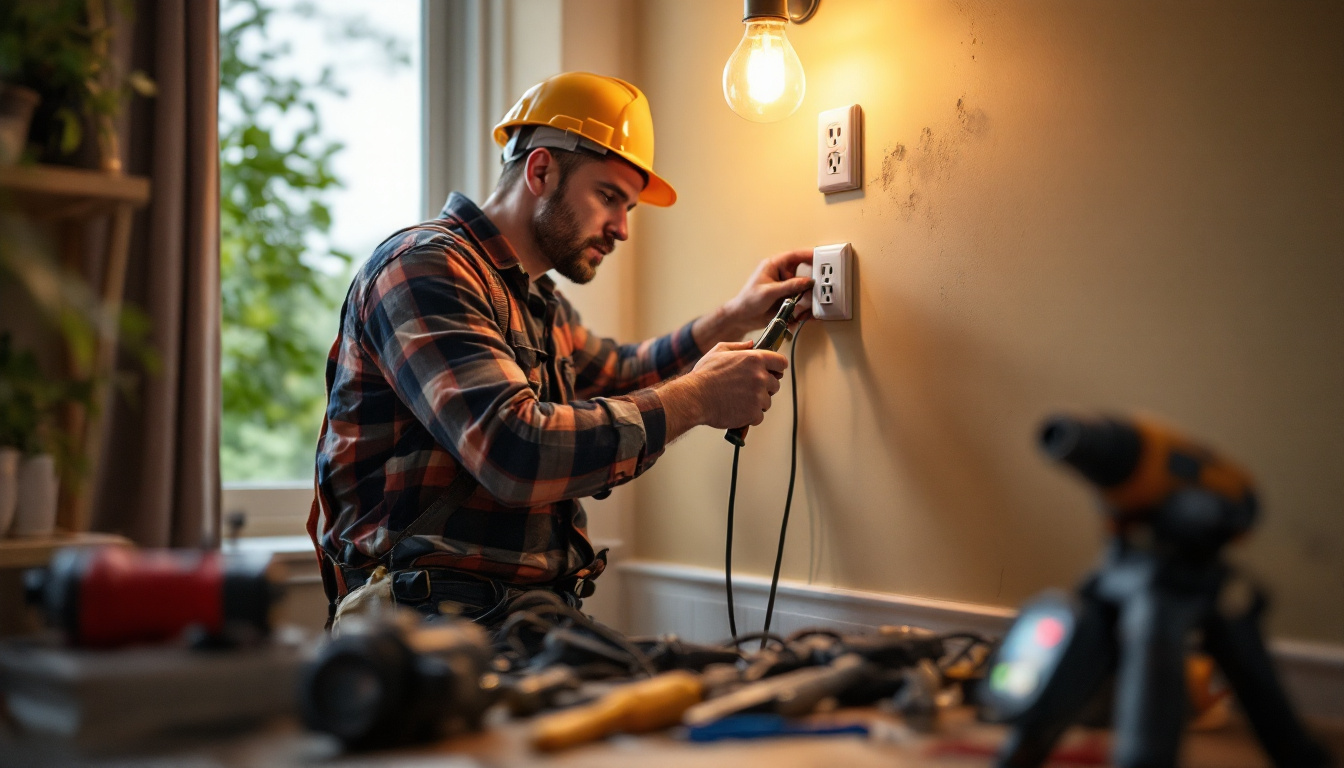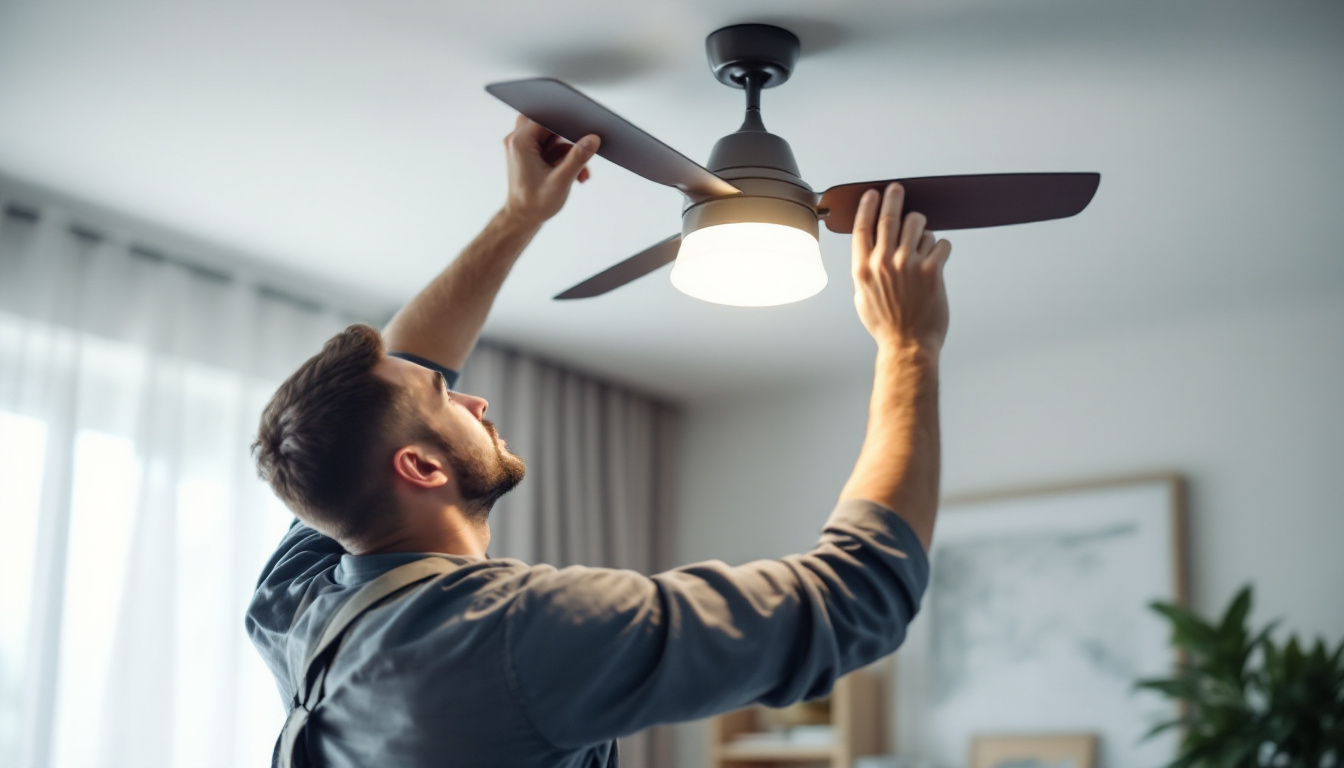
Lighting contractors play a crucial role in ensuring that residential and commercial spaces are well-lit and functional. However, even the most experienced professionals can make mistakes when it comes to installing and managing 120V outlets. Understanding these common pitfalls can help contractors avoid costly errors and enhance their reputation in the industry. This article delves into the frequent mistakes lighting contractors make regarding 120V outlets, offering insights and solutions to improve their work quality.
Before diving into the common mistakes, it is essential to have a clear understanding of what a 120V outlet is and its significance in lighting installation. A 120V outlet is the standard voltage used in most residential and commercial electrical systems in North America. These outlets provide power to various lighting fixtures, appliances, and devices, making them a cornerstone of modern electrical infrastructure. The versatility of 120V outlets allows them to power everything from small lamps to larger appliances, contributing to the overall functionality and convenience of our living and working spaces.
Moreover, the design of 120V outlets has evolved over the years to enhance safety and usability. For instance, many outlets now come equipped with tamper-resistant features to prevent accidental shocks, especially in homes with young children. Understanding these advancements can help homeowners and contractors alike make informed decisions about their electrical systems, ensuring that installations not only meet current standards but also anticipate future needs.
proper installation of 120V outlets is vital for safety and functionality. A poorly installed outlet can lead to electrical hazards, including short circuits and fire risks. Additionally, improper installation can result in flickering lights, inconsistent power supply, and increased energy costs. The ramifications of neglecting proper installation can be severe, leading to costly repairs and potential harm to individuals in the vicinity.
Contractors must ensure that they adhere to local electrical codes and regulations when installing these outlets. Understanding the requirements for load capacity, grounding, and circuit protection is essential for a successful installation. Furthermore, it is important to regularly inspect and maintain these outlets to ensure they remain in good working condition. Regular checks can help identify wear and tear, which, if left unaddressed, could lead to more significant issues down the line. This proactive approach not only enhances safety but also extends the lifespan of the electrical system.
There are several types of 120V outlets, including standard duplex outlets, GFCI (Ground Fault Circuit Interrupter) outlets, and AFCI (Arc Fault Circuit Interrupter) outlets. Each type serves a specific purpose and has its own installation requirements. Familiarity with these outlet types is crucial for contractors to ensure they are using the right outlet for the right application. For example, GFCI outlets are particularly important in areas prone to moisture, such as kitchens and bathrooms, as they can prevent electrical shocks by cutting off power when a ground fault is detected.
In addition to GFCI and AFCI outlets, there are also specialized outlets designed for specific applications, such as USB outlets that allow for direct charging of devices without the need for an adapter. These innovations reflect the growing demand for convenience and efficiency in our increasingly tech-driven world. As technology continues to evolve, staying informed about the latest outlet types and their benefits will be essential for both contractors and homeowners looking to optimize their electrical systems for safety and performance.
Despite the importance of proper installation, many lighting contractors fall into common traps that can jeopardize the safety and efficiency of their work. Below are some of the most frequent mistakes made during the installation of 120V outlets.
One of the most significant errors lighting contractors make is failing to calculate the load requirements accurately. Each outlet has a specific capacity, and exceeding this capacity can lead to overheating and potential fire hazards. Contractors should always assess the total wattage of the devices that will be plugged into the outlet and ensure that the circuit can handle the load.
To avoid this mistake, contractors should create a detailed plan that includes the wattage of all connected devices. This will help ensure that the circuit is not overloaded, promoting safety and efficiency.
Grounding is a critical aspect of electrical safety that is often overlooked. Failing to ground a 120V outlet properly can lead to electrical shocks and equipment damage. Contractors must ensure that all outlets are connected to a grounding system that meets local codes.
When installing outlets, it is essential to check that the grounding wire is securely connected to the outlet and that the grounding system is intact. This simple step can prevent serious accidents and enhance the reliability of the electrical system.
Wiring techniques play a vital role in the functionality of 120V outlets. Many contractors make the mistake of using incorrect wiring methods, which can lead to poor connections and electrical failures. For instance, using wire nuts instead of terminal screws can result in loose connections and arcing.
Contractors should familiarize themselves with proper wiring techniques and ensure that they are using the appropriate materials for each installation. This includes selecting the right gauge of wire and ensuring that connections are made securely.
The location of a 120V outlet can significantly impact its functionality and safety. Choosing the wrong installation location can lead to accessibility issues and increased risks. Below are common mistakes related to outlet placement.
One common error is installing outlets at inappropriate heights. Outlets that are too high can be difficult to reach, while those that are too low may be prone to water damage or accidental disconnection. The National Electrical Code provides guidelines for outlet height, and contractors should adhere to these standards to ensure accessibility.
Contractors should also consider the specific needs of the space when determining outlet height. For example, outlets in kitchens may need to be placed higher to accommodate countertop appliances, while outlets in living areas should be easily accessible for devices like lamps and chargers.
While functionality is paramount, aesthetics should not be overlooked. Outlets that are poorly placed can disrupt the visual flow of a room. Lighting contractors should consider the overall design of the space and strategically place outlets to blend seamlessly with the environment.
Incorporating design elements, such as outlet covers that match the decor or using recessed outlets, can enhance the overall appearance of a room while maintaining functionality.
Another mistake is failing to account for future electrical needs. As technology evolves, the demand for electrical outlets may increase. Contractors should consider installing additional outlets or using multi-outlet strips to accommodate future devices.
Planning for future needs can save time and money down the line, as it reduces the need for additional installations or upgrades. It is wise to discuss potential future requirements with clients to ensure their needs are met.
Safety should always be a top priority when working with electrical systems. However, many contractors overlook critical safety measures during the installation of 120V outlets. Below are some common safety oversights.
GFCI outlets are essential in areas where water is present, such as bathrooms, kitchens, and outdoor spaces. Contractors often neglect to install GFCI outlets in these areas, putting users at risk of electrical shock. It is crucial to adhere to local codes that require GFCI protection in wet locations.
By installing GFCI outlets where necessary, contractors can significantly enhance safety and protect users from potential hazards.
After installing a 120V outlet, it is vital to test it to ensure proper functionality. Many contractors skip this step, leading to undetected issues that can cause inconvenience and safety risks. Simple testing tools can quickly identify problems such as reverse polarity or open ground.
Taking the time to test outlets after installation can prevent future headaches for both contractors and clients. It ensures that the installation meets safety standards and operates as intended.
Each region has specific electrical codes and regulations that must be followed. Contractors sometimes overlook these codes, leading to non-compliant installations that can result in fines or safety hazards. Staying informed about local codes is essential for ensuring that installations meet legal requirements.
Contractors should regularly review local regulations and incorporate them into their installation practices. This not only enhances safety but also builds trust with clients who expect compliance with industry standards.
Once the installation of 120V outlets is complete, there are still important considerations to keep in mind. Proper follow-up can enhance customer satisfaction and ensure the longevity of the installation.
Many clients may not be familiar with the proper use of electrical outlets. Lighting contractors should take the time to educate clients on safe practices, such as not overloading outlets and using surge protectors. Providing this information can empower clients to use their outlets safely and effectively.
Additionally, contractors can offer tips on maintaining outlets, such as keeping them free from dust and debris, which can prolong their lifespan and functionality.
Providing ongoing maintenance services can set contractors apart from their competitors. Regular inspections and maintenance can help identify potential issues before they become significant problems. Offering these services can also foster long-term relationships with clients.
By establishing a maintenance schedule, contractors can ensure that outlets remain in good working condition and that clients feel supported in their electrical needs.
Feedback from clients is invaluable for improving services. Contractors should actively seek input from clients regarding their experience with the installation process and the functionality of the outlets. This feedback can provide insights into areas for improvement and help contractors refine their practices.
Encouraging open communication can lead to better client relationships and enhance the overall quality of service provided.
Lighting contractors play a vital role in ensuring that 120V outlets are installed safely and effectively. By understanding common mistakes related to load calculation, grounding, installation location, safety oversights, and post-installation considerations, contractors can enhance their skills and provide better service to their clients. Continuous education and attention to detail are key to avoiding these pitfalls and achieving success in the lighting industry.
Ultimately, the goal is to create safe, functional, and aesthetically pleasing electrical systems that meet the needs of clients while adhering to industry standards. By being aware of common mistakes and taking proactive measures, lighting contractors can elevate their work and build a strong reputation in the field.
Don’t let common installation mistakes compromise your lighting projects. At LumenWholesale, we provide lighting contractors with the highest quality, spec-grade lighting products at exceptional wholesale prices. Our commitment to cutting out the middleman means you get the best value without the inflated markups. With our extensive selection that meets rigorous industry standards, you can trust that your installations will be safe, functional, and aesthetically pleasing. Plus, with free shipping on bulk orders, you can stock up on premium lighting essentials without worrying about hidden fees. Elevate your next project by choosing Wholesale Lighting at the Best Value with LumenWholesale.

Discover essential insights into LED lighting for bathrooms with our comprehensive guide tailored for lighting contractors.

Discover how ceiling fan light fixtures can be a game-changer for lighting contractors looking to win more bids.

Discover how solar-powered garden lamps are revolutionizing the lighting industry, offering eco-friendly solutions that boost efficiency and profitability for contractors.

Discover essential insights for lighting contractors on selecting and installing exterior hanging light fixtures.